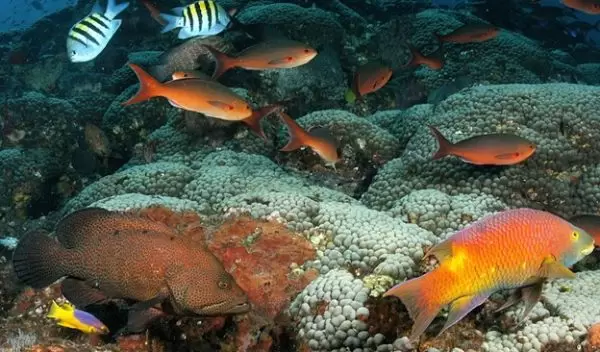
Flooding in Houston polluted reefs more than 100 miles offshore
Runoff from Houston's 2016 Tax Day flood and 2017's Hurricane Harvey flood carried human waste onto coral reefs more than 100 miles offshore in the Flower Garden Banks, according to U.S. National Science Foundation-funded research.
"We were pretty shocked," said marine biologist Adrienne Correa of Rice University, a co-author of the study published in Frontiers in Marine Science. "One thing we always thought the Flower Garden Banks were safe from was terrestrial runoff and nutrient pollution. It's a jolt to realize that in these extreme events, it's not just the salt marsh or the seagrasses we need to worry about. Offshore ecosystems can be affected, too."
The Flower Garden Banks sit atop salt domes near the edge of the continental shelf, about 100 miles from the Texas and Louisiana coast. Rising several hundred feet from the seafloor, the domes are topped with corals, algae, sponges and fish. Each bank, or dome-topped ecosystem, is separated by miles of open ocean.
Correa and colleagues sampled sponges on the banks in 2016, 2017 and 2018. They showed that samples collected after extreme storm flooding in 2016 and 2017 contained E. coli and other bacteria. They also used a catalog of E. coli genetic markers contributed by Rice environmental engineer and co-author Lauren Stadler to show that E. coli on sponges in 2017 came from Harvey floodwaters.
Lead author Amanda Shore of Farmingdale State College in New York said that many studies have shown that nearshore reefs can be harmed by pollutants washed into the ocean by rainfall over land. But marine biologists generally assume ecosystems far from shore are safe from such dangers.
"This shows perhaps they aren't protected from severe events," said Shore. "And these events are increasing in frequency and intensity with climate change."


